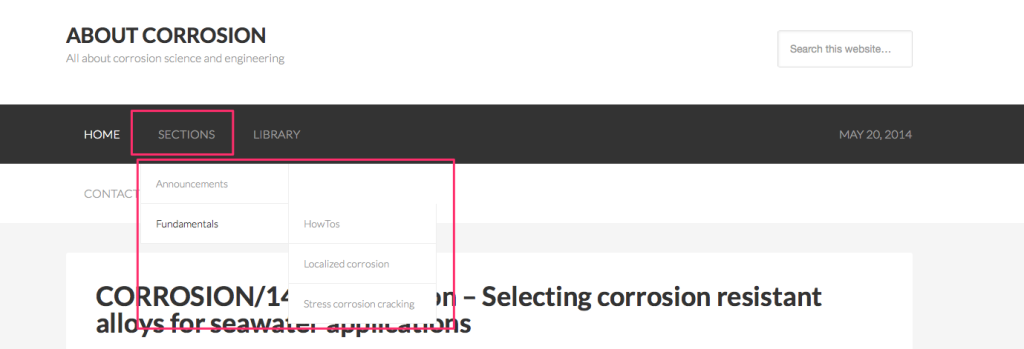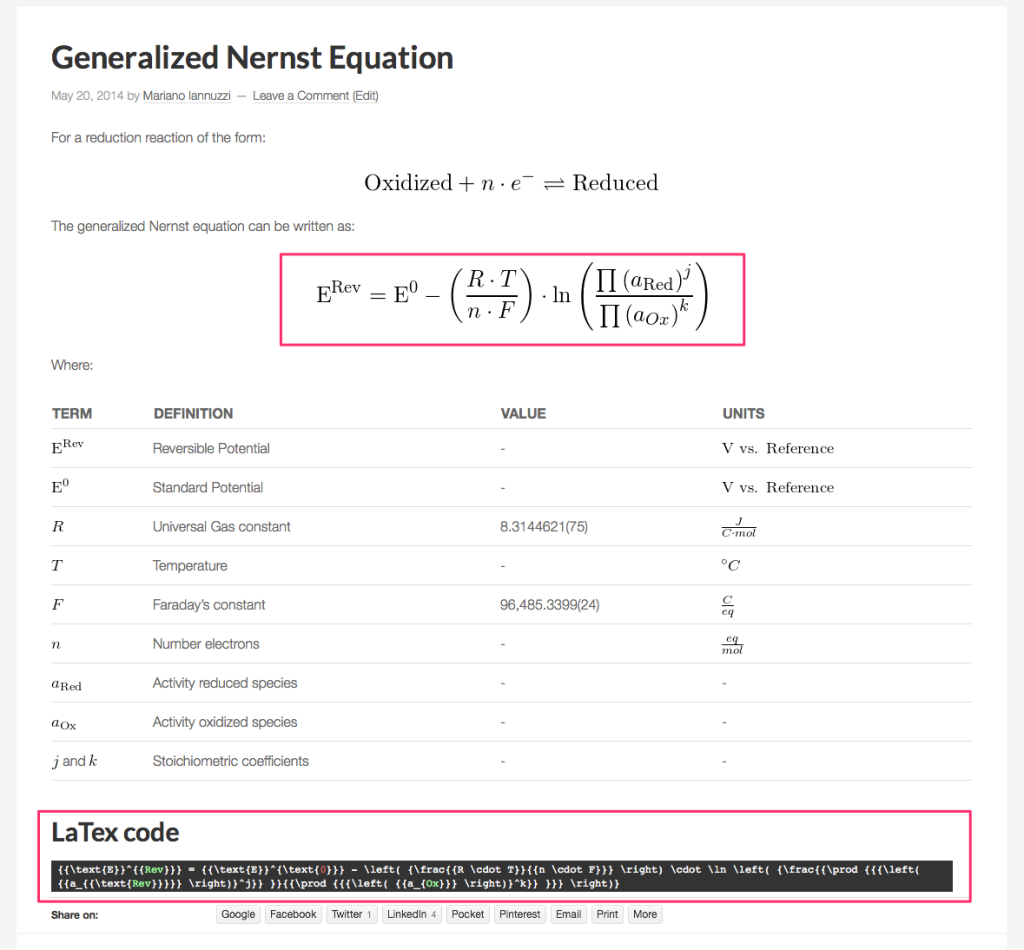As the content of the blog keeps growing, I found necessary to create a taxonomy to keep things organized. The Home tab is the blog’s homepage and will list the most relevant posts. The Sections tab is divided into subsections containing announcements, fundamentals of corrosion science and engineering, materials science concepts, etc. This taxonomy is reflected in the new global menu, Figure 1.

Meet the new library
One of my goals for About Corrosion is to create a comprehensive database of definitions and equations that could be used freely by anyone. Definitions and equations will not be displayed on the Home page to reduce clutter; instead, they will be cataloged in the new Library tab, Figure 2.

About equations
First a disclaimer, I am not a LaTex power user. However, LaTeX is perhaps the best language to share mathematical expressions, and I decided to learn the foundations.
The Equations submenu summarizes all the expressions used in the blog. The top portion of each entry shows the rendered equation, which can be copied-pasted into other documents. The LaTeX code of the expression is highlighted at the bottom. You can use that code to create your high-resolution expressions using any LaTex rendering software, Figure 3.

Feedback is welcome!
I would very much appreciate your comments to help me identifying typos in the equations and optimizing the LaTex code. Please feel free to leave feedback in the comment section or simply Contact Me!